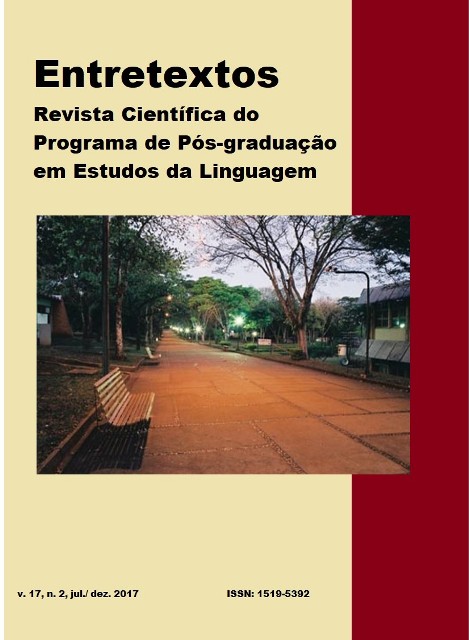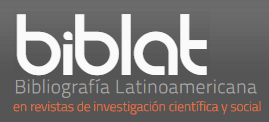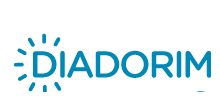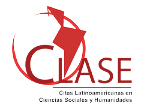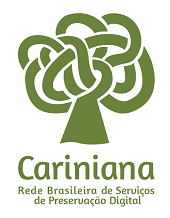De Novo Creari : School manuscript analysis through intertextuality and creativity topics
DOI:
https://doi.org/10.5433/1519-5392.2017v17n2p77Keywords:
Creativity, Intertextuality, Textual Analysis.Abstract
Since its initial theorization, (TATARKIEWICK, 1980; KOLP, 2009) creativity is studied through multiple approaches. The classroom textual production approach (ALBUQUERQUE, 1992; MAKSI?; ŠEVKUŠI?, 2012; GRAINGER, GOOUCH; LAMBIRTH, 2005) points out that we have in intertextuality (KRISTEVA, 1986; BEAUGRANDE; DRESSLER, 1981; BAZERMAN, 2007, 2011; KOCH et al., 2008, 2010) a strong token that a text is more creative, allied to criteria specific to creativity to be analyzed and proper aspects of the classroom writing (CALIL, 2008, 2009, 2010, 2012a, 2012b; CALIL; LIMA, 2007). This paper proposes an analysis of school manuscripts, produced by recently-literate children, in the classroom environment with the main goal of determining in which way a text can be considered creative, this way we defined four topics, that are subdivided in nineteen criteria. Two topics are related to intertextuality (wide and by the standardization of the social language at use) and two are related to creativity itself (playing with language and idea originality, authenticity and imagination). Our corpus is composed of 143 manuscripts, result of the ‘Tales of How and Why’ project, made in a private school in Maceió, Alagoas, Brazil. From these manuscripts, we chose 20 to a deeper analysis and the results pointed out the proportion of 65% intertextuality criteria over 35% of creativity criteria. We also present the textual analysis of two of these manuscripts. The data and results obtained offer us an initial definition of creativity of text production in the school context.Downloads
References
ALLEN, Graham. Intertextuality. Londres: Routledge, 2011.
ANTUNES, Irandé. Análise de textos: fundamentos e práticas. São Paulo: Parábola Editorial, 2010.
BAKHTIN, Mikhail. Estética da criação verbal. São Paulo: Martins Fontes, 1992.
BAZERMAN, Charles. Escrita, gênero e interação social. São Paulo: Contexto, 2007.
BAZERMAN, Charles. Gênero, agência e escrita. São Paulo: Cortez, 2011.
BEAUGRANDE, Roberl-Alain de; DRESSLER, Wolfgang. Introduction to text linguistics. Londres: Longman, 1981.
CALIL, Eduardo (Org.). A menina dos títulos: repetição e paralelismo em manuscritos de Isabel. Alfa, São Paulo, v. 54, n. 2, p. 533-564, 2010.
CALIL, Eduardo (Org.). A rainha comilona: dialogismo e memória na escritura escolar. Bakhtiniana, São Paulo, v. 7, p. 24-45, jan./jun. 2012a.
CALIL, Eduardo (Org.). Autoria: a criança e a escrita de histórias inventadas. 2. ed. Londrina: Eduel, 2009.
CALIL, Eduardo (Org.). Contos do como e do por que: projeto didático 2012. Maceió: Universidade Federal de Alagoas, 2012b.
CALIL, Eduardo (Org.). Escutar o invisível: escritura & poesia na sala de aula. São Paulo: Editora Unesp; Rio de Janeiro: Funarte, 2008.
CALIL, Eduardo (Org.). Um manuscrito escolar e a interferência da homonímia no processo de escritura. Revista do Gelne. João Pessoa, v. 6, n. 2, p. 61-72, 2004.
CALIL, Eduardo; LIMA, Maria Hozanete Alves de. Nomes próprios em histórias inventadas: odores de um encadeamento. In: CALIL, Eduardo (Org.).Trilhas da escrita: autoria, leitura e ensino. São Paulo: Cortez, 2007. p. 111-131.
CASCUDO, L. C. Contos tradicionais do Brasil. São Paulo: Global, 2006.
COSTA VAL, Maria das Graças. Redação e textualidade. São Paulo: Martins Fontes, 1991.
CSIKSZENTMIHALYI, Mihaly. Creativity: flow and the psychology of discovery and invention. EUA: Harper Perennial, 1996.
GRAINGER, Teresa; GOOUCH, Kathy; LAMBIRTH, Andrew. Creativity and writing: developing voice and verve in the classroom. Oxfordshire,UK: Routledge, 2005.
GRESILLON, Almuth. Elementos de crítica genética: ler os manuscritos modernos. Porto Alegre: UFRGS, 2007.
KOCH, Ingedore Villaça; ELIAS, Vanda Maria. Ler e escrever: estratégias de produção textual. São Paulo: Contexto, 2010.
KOCH, Ingedore. Intertextualidade: diálogos possíveis. São Paulo: Cortez, 2008.
KOLP, Pierre. La Creativité considérée d’un point de vue historique et considérée d’un point de vue actuel. Bélgica: Centre de Formation de l‟enseignement de l‟UVCB, 2009.
KRISTEVA, Julia. Desire in language: a semiotic approach to literature and art. New York: Columbia University Press, 1980.
KRISTEVA, Julia. Word, dialogue and novel. In: MOI, Toril (Org.). The kristeva reader. New York: Columbia University Press, 1986. p. 34-62.
LUBART, T. Creativity, high potential and assessment issues. In: ECHA CONFERENCE: FROM GIFTEDNESS TO SUCCESSFUL INTELIGENCE, 11., 2008, Praga. Proceedings… Praga, 2008.
MAKSIĆ, Slavica; ŠEVKUŠIĆ, Slavica. Creativity of students’ stories: case study at primary school. Institute for Educational Research, Belgrado, v. 44, n. 1, p. 128-143, 2012.
MARCUSCHI, Luiz Antônio. Produção textual: análise de gêneros e compreensão. São Paulo: Parábola Editorial, 2008.
MASLOW, Abraham H. The creative attitude. In: MASLOW, Abraham H. The farther reaches of human nature. New York: Penguin, 1973. p. 55-68.
RIBOT, Théodule. Essay on the creative imagination. London: Kegan, Paul, Trench, Trübner, 1906.
ROBINSON, Ken. Libertando o poder criativo: as teorias sobre imaginação, criatividade e inovações que despertam os talentos reprimidos. São Paulo: HSM, 2012.
ROGERS, Carl. Toward a theory of creativity. In: ROGERS, Carl. On becoming a person. Boston: Houghton Mifflin, 1961. p. 347-359.
STERNBERG, Robert J. The rainbow project: enhancing the SAT through assessments of analytical, practical and creative skills. Intelligence, New York, v. 34, n. 1, p. 321- 350, 2006.
TATARKIEWICZ, Wladyslaw. A history of six ideas: an essay in aesthetics. Melbourne: International Volume Series, 1980.
TORRANCE, E. P. The torrance tests of creative thinking-norms-technical manual research edition-verbal tests, forms A and B-figural tests, forms A and B. Princeton: Personnel Press, 1966
Downloads
Published
How to Cite
Issue
Section
License
Entretextos adota a Licença Creative Commons Attribution 4.0 International, portanto, os direitos autorais relativos aos artigos publicados são do(s) autor (es).
Sob essa licença é possível: Compartilhar - copiar e redistribuir o material em qualquer suporte ou formato. Adaptar - remixar, transformar, e criar a partir do material, atribuindo o devido crédito e prover um link para a licença e indicar se mudanças foram feitas.

